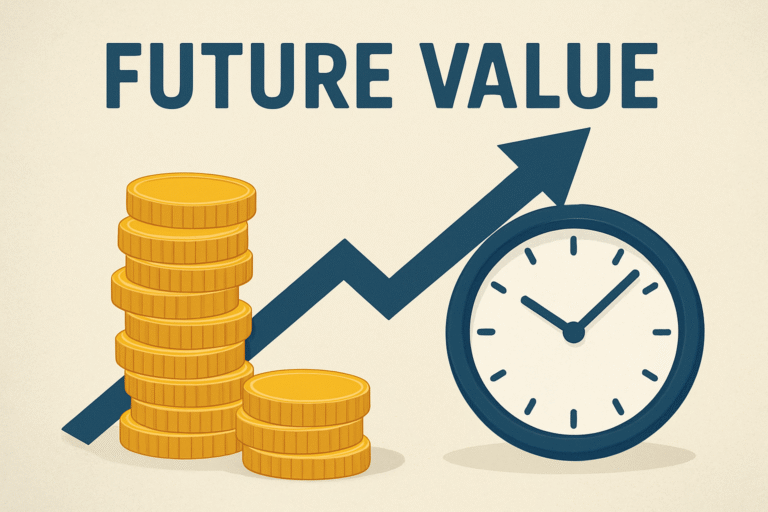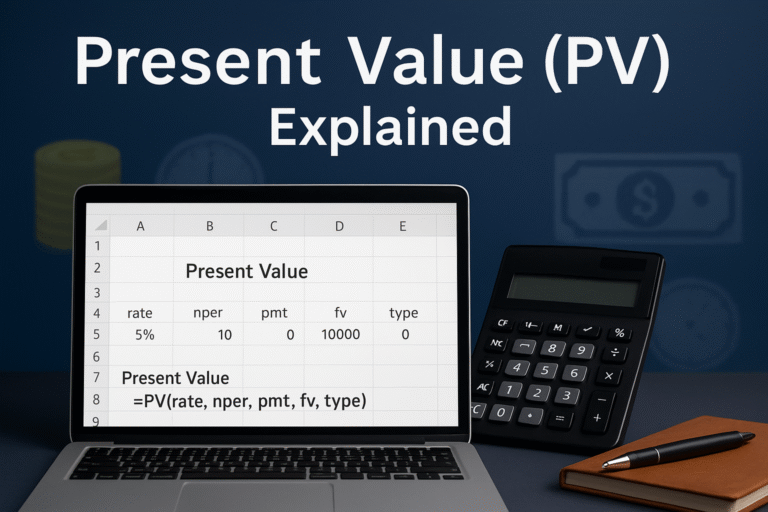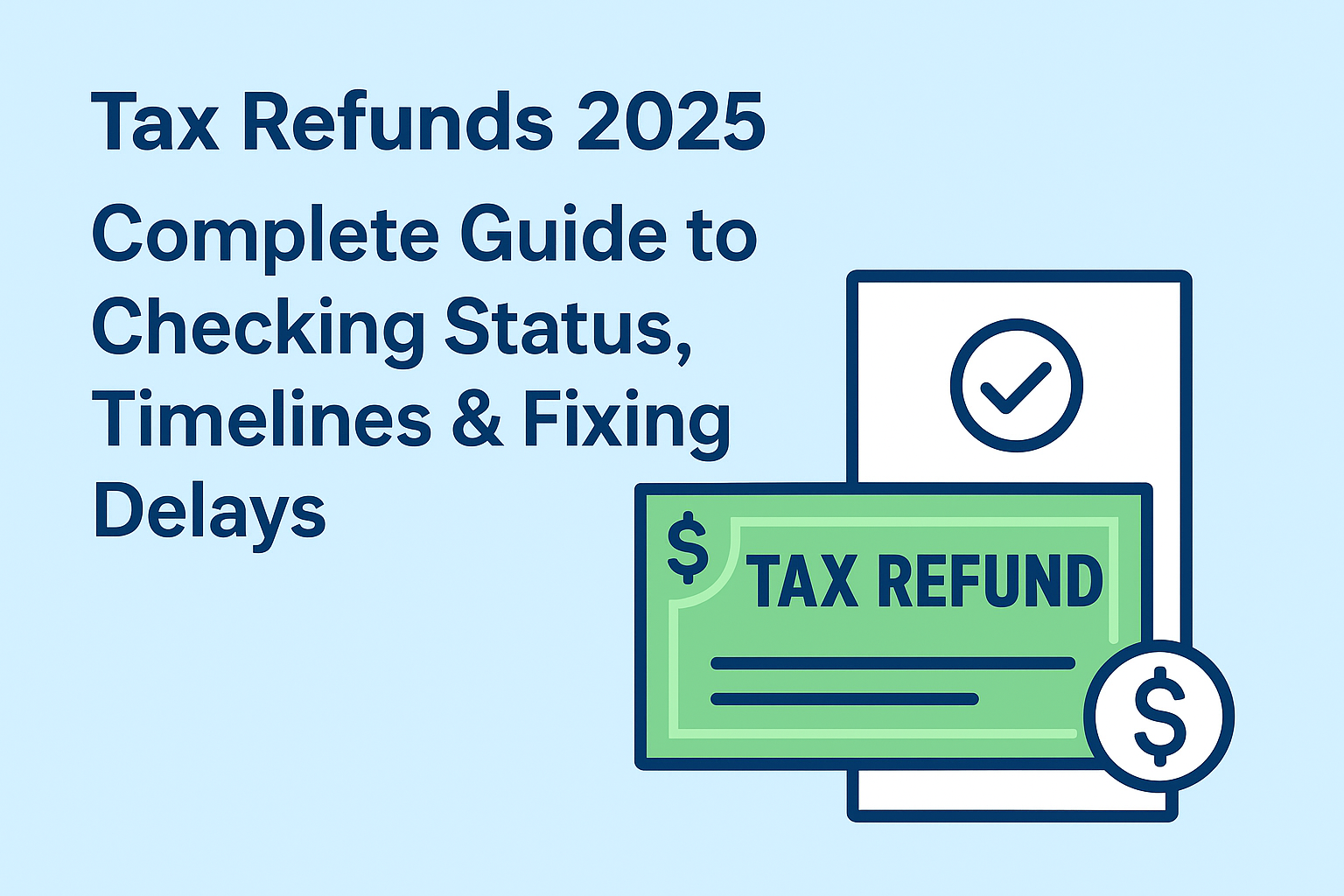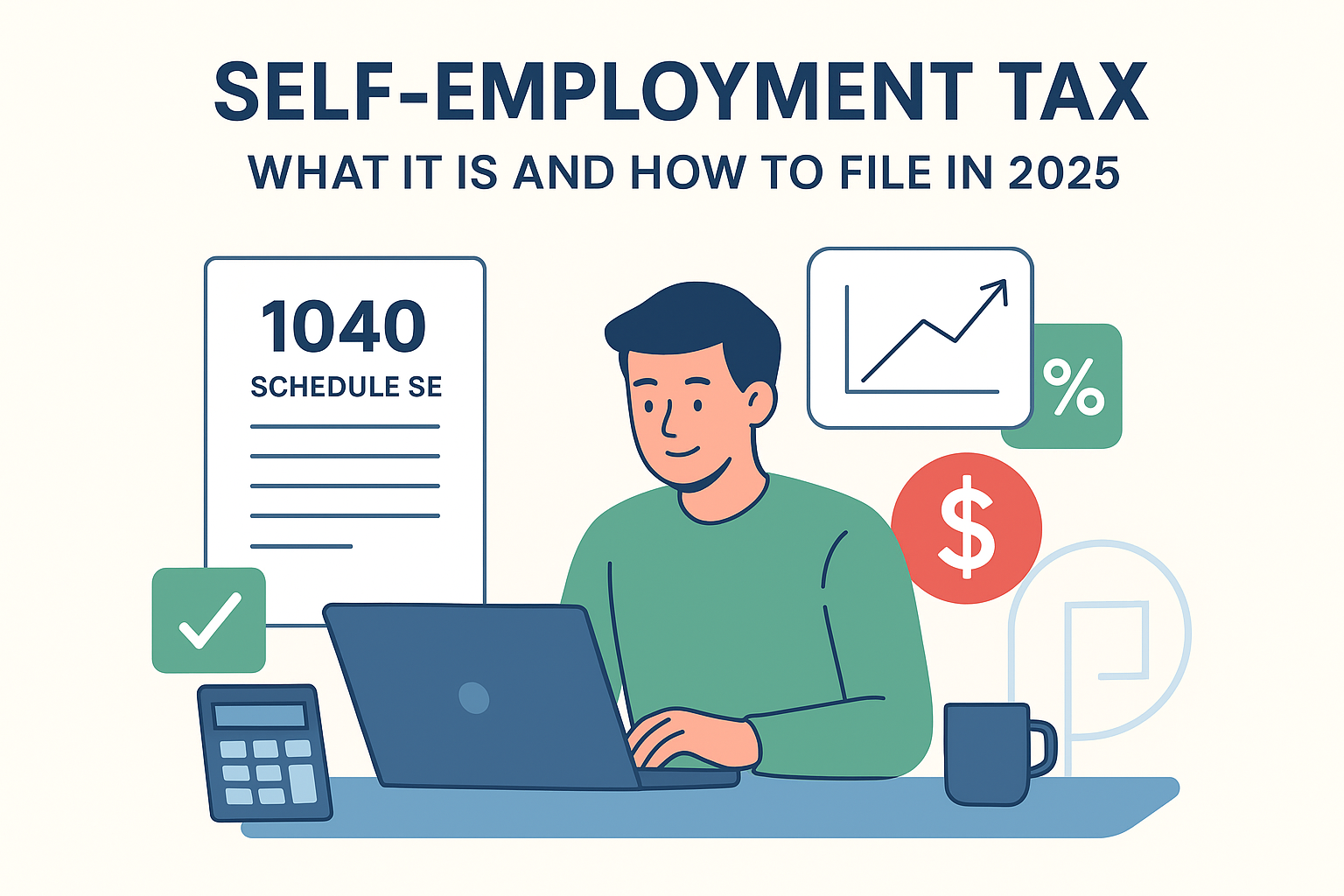Finding the best dividend ETF can feel overwhelming with hundreds of funds promising steady income, growth, and diversification. Whether you’re building a retirement portfolio or simply want reliable passive income, dividend ETFs remain one of the most popular tools for investors in 2025.
But not all dividend ETFs are created equal. Some focus on high yields, others on consistent dividend growth, and some balance income with long-term capital appreciation. Choosing the right one depends on your financial goals, risk tolerance, and time horizon. ETF.com Analysis
TL;DR: Best Dividend ETF for 2025
Quick Takeaways
- The best dividend ETFs combine income + growth while keeping fees low.
- Top picks for 2025: SCHD, VYM, VIG, HDV, SDY.
- Don’t chase yield — focus on dividend growth and sustainability.
- Dividend ETFs work best in retirement income strategies and balanced portfolios.
- SCHD = best all-rounder, VYM = best for high yield, VIG = best for dividend growth.
What Is a Dividend ETF?
A dividend ETF (exchange-traded fund) is a basket of dividend-paying stocks bundled into a single, tradable security. Instead of buying individual dividend stocks, investors can hold dozens (or even hundreds) at once, spreading risk while still earning regular income.
Key features of dividend ETFs:
- Pay dividends (usually quarterly, sometimes monthly) directly to shareholders
- Track an index of dividend-paying companies
- Offer lower fees compared to actively managed funds
- Provide instant diversification across multiple sectors
Put simply: a dividend ETF lets you collect income while staying diversified, without the headache of picking individual dividend stocks. Best ETFs to Buy in 2025 for Long-Term Growth and Passive Income
Why Dividend ETFs Matter
Dividend ETFs are popular because they blend income and growth:
- Income stream: Regular payouts (quarterly/monthly)
- Stability: Often less volatile than pure growth ETFs
- Flexibility: Can reinvest dividends (DRIP) or use as income
- Tax benefits: Many payouts qualify for lower dividend tax rates
SEC guide on ETFs for more background.
How to Evaluate a Dividend ETF
When comparing the best dividend ETFs, focus on:
| Factor | Why It Matters |
|---|---|
| Yield | Higher yield = more income, but may signal risk |
| Dividend Growth | Consistency matters more than chasing high yields |
| Expense Ratio | Fees reduce returns (look for ≤0.10%) |
| Top Holdings & Sector Exposure | Avoid overconcentration (e.g., all in financials) |
| Performance History | Long-term track record vs S&P 500 |
| Tax Treatment | U.S. vs international dividends differ |
Pro Tip: A 3–4% sustainable yield + dividend growth beats a risky 7% payout. SCHD vs VYM
Types of Dividend ETFs
- High-Yield Dividend ETFs → Maximize income (e.g., VYM, HDV)
- Dividend Growth ETFs → Focus on companies with consistent payout increases (e.g., VIG, DGRO)
- Quality / Low Volatility Dividend ETFs → Balance sheet strength + stable payouts (e.g., SCHD)
- Monthly Dividend ETFs → Provide frequent income (popular with retirees)
Best Dividend ETFs for 2025
Here are the top dividend ETFs in 2025 with updated data:
| ETF | Yield (2025 est.) | Expense Ratio | Focus | Top Holdings |
|---|---|---|---|---|
| SCHD (Schwab U.S. Dividend Equity) | ~3.6% | 0.06% | High-quality U.S. dividend payers | Broadcom, PepsiCo, Cisco |
| VYM (Vanguard High Dividend Yield) | ~3.2% | 0.06% | Broad exposure to large-cap dividend stocks | JPMorgan, Johnson & Johnson, Exxon |
| VIG (Vanguard Dividend Appreciation) | ~2.1% | 0.06% | 10+ years of dividend growth | Microsoft, Procter & Gamble, Walmart |
| HDV (iShares Core High Dividend) | ~3.8% | 0.08% | Screens for quality + yield | Exxon, Chevron, Verizon |
| SDY (SPDR S&P Dividend ETF) | ~2.8% | 0.35% | 20+ years of dividend increases | AT&T, Realty Income, AbbVie |
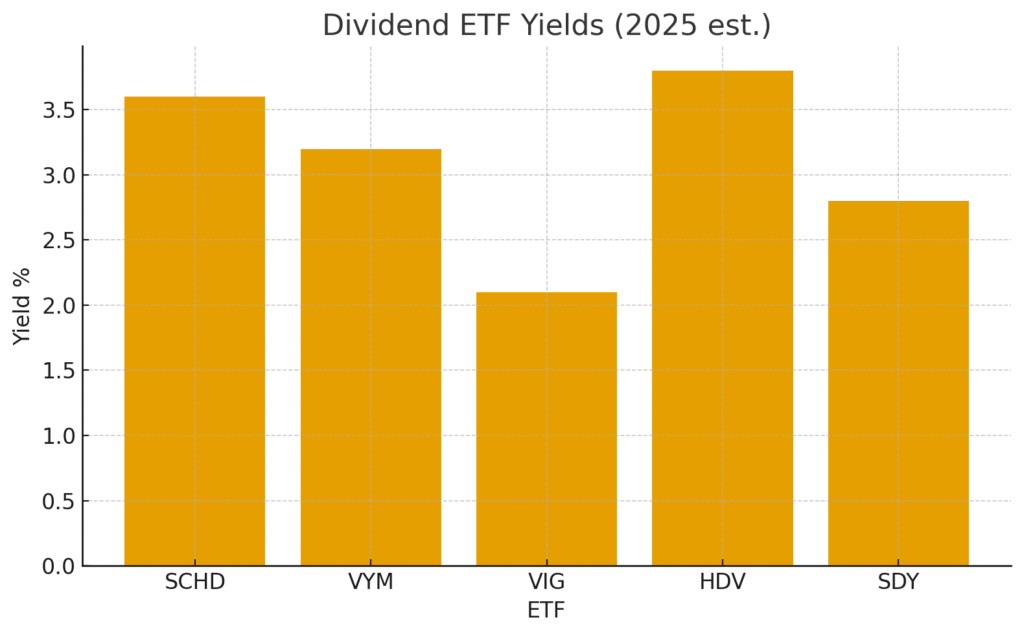
Historical Performance: $10,000 Growth
How $10k would have grown (dividends reinvested, 10 years ending 2025):
| ETF | Final Value | CAGR | Notes |
|---|---|---|---|
| SCHD | ~$31,000 | ~12% | Best blend of growth + yield |
| VIG | ~$28,000 | ~11% | Lower yield, higher stability |
| VYM | ~$26,000 | ~10% | Strong but less growth than SCHD |
| SDY | ~$24,000 | ~9% | Good history but higher expense |
| HDV | ~$22,000 | ~8% | Higher yield, slower growth |
Key Insight: SCHD and VIG deliver the best total return long-term, while VYM and HDV give higher immediate income. VYM vs VIG
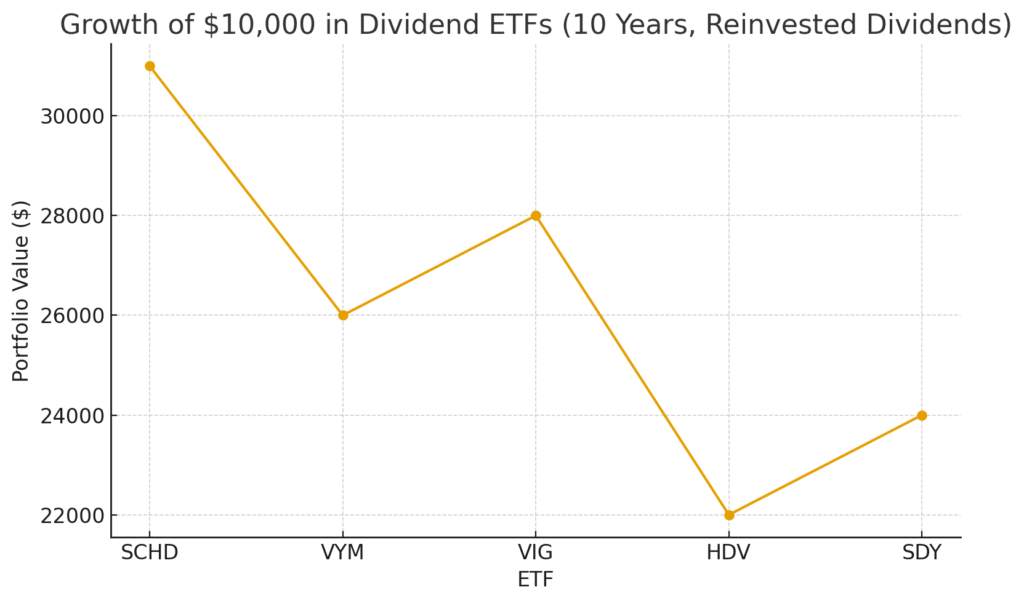
Which Dividend ETF Fits You? (Investor Scenarios)
- Retirees needing higher income → VYM or HDV
- Young investors focused on growth → VIG or SCHD
- Balanced all-rounder (income + growth) → SCHD
- Conservative investor wanting stability → VIG
- Dividend purist (long history) → SDY
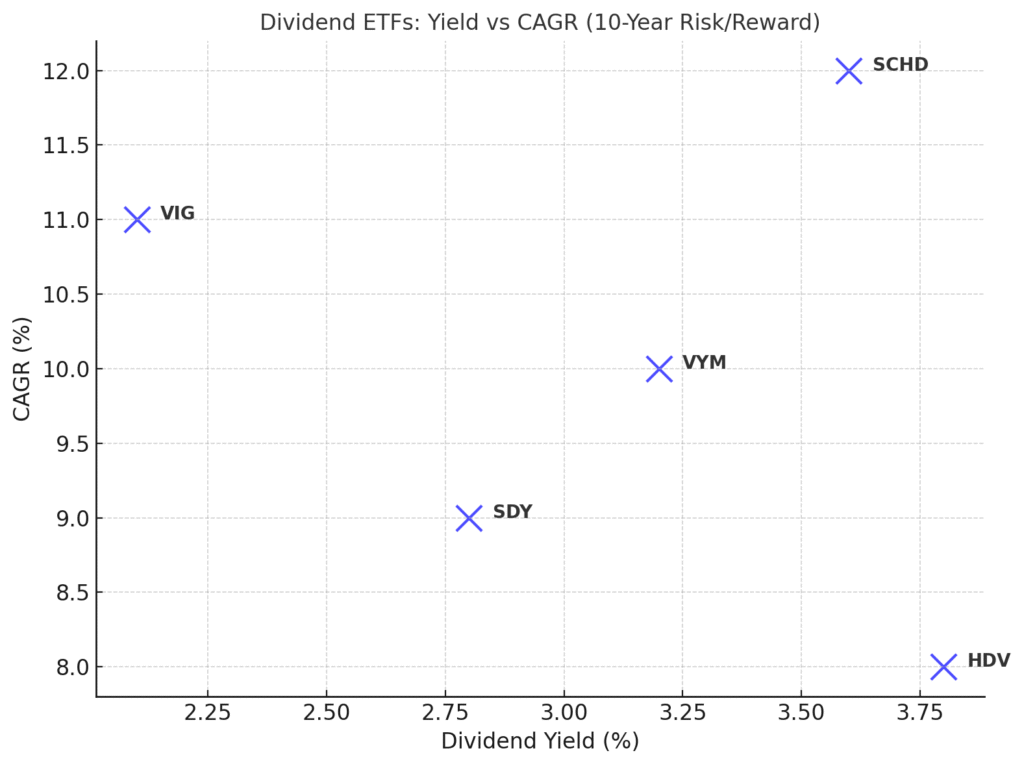
A Yield vs CAGR scatter plot that visually shows the risk/reward trade-off:
- SCHD sits in the sweet spot (solid yield + strong growth).
- VYM & HDV lean higher yield but lower long-term growth.
- VIG delivers strong growth but lower income. Morningstar ETF Ratings
Risks of Dividend ETFs
- Dividend cuts (especially in recessions)
- Sector concentration (many funds overweight financials/energy)
- Interest rate sensitivity (high-yield ETFs underperform when bond yields rise)
- Tax drag (international ETFs may face foreign withholding)
- Chasing yield → high yield often = red flag
How to Build a Dividend ETF Portfolio
- Mix income + growth ETFs
- Example: 50% SCHD + 30% VIG + 20% VYM
- Rebalance annually
- Use tax-advantaged accounts (IRAs/401k)
- Reinvest dividends (DRIP) for compounding
Conclusion: Which Dividend ETF Is Best?
- SCHD = best all-rounder (income + growth)
- VYM = higher yield choice
- VIG = best for dividend growth & stability
- HDV = higher yield but slower growth
- SDY = strong dividend history, but pricier
👉 The best dividend ETF depends on your personal goals: income now, growth later, or a mix.
Disclaimer: This article is for educational purposes only and does not constitute financial advice. Always do your own research or consult a licensed advisor before investing.
Author Bio
Written by Max Fonji
Founder of TheRichGuyMath.com — simplifying finance & investing for 8+ years. My focus: clear, beginner-friendly strategies backed by data and trusted sources.


